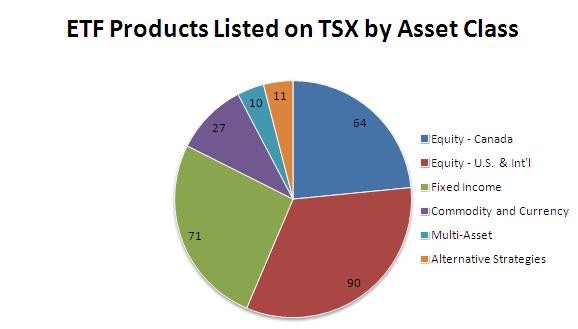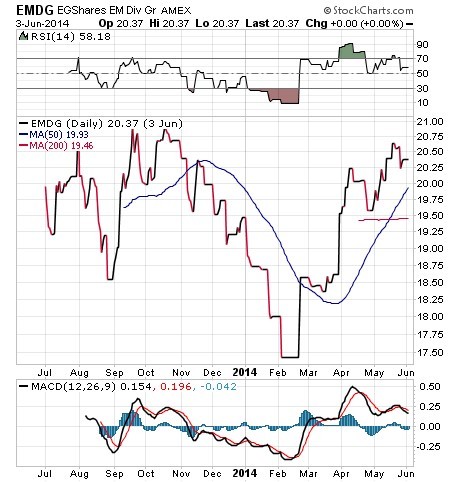Four Best Sector ETF Investments For 2013
Post on: 15 Август, 2015 No Comment

If you were stranded on an island and could only have four ETFs next year, which would they be? Several stock market strategists share their top ETF sector investment ideas for 2013.
Jeremy Held, director of research at ALPS Advisors in Denver, with $7.6 billion in assets under management: Energy Select Sector SPDR ( XLE ).
The combination of strong fundamentals, abundant overseas exposure and historically low valuations should make energy the best performing sector in the market.
With a price-to-earnings ratio of 11, energy is now the cheapest sector in the S&P 500. Brent crude oil, the most reliable global benchmark for supply and demand, is currently trading at $107 a barrel. This is the highest calendar year-end price in history. It’s 10% higher than it was in 2007, the last time energy stocks led the market higher.
While Brent has steadily risen in price, OPEC spare capacity, at 2%, has dropped to its lowest level since 2008. Considering that rising prices and falling capacity are coming on the heels of the worst global financial crisis in generations, even a small uptick in global gross domestic product could result in higher oil prices and higher profits for energy companies.
No other sector generates more of its profits overseas than energy. This is particularly important in light of how expensive U.S.-focused companies are relative to their multinational counterparts.
Historically, investors have paid as much as 50% higher multiples for companies with global operations, but this figure has dropped to 10% since 2001. As a result, multinational companies, especially energy companies, will likely outperform in a global market rally.
The top holdings, Exxon ( XOM ) andConoco Phillips ( COP ), can both benefit from global growth and are uniquely positioned vs. foreign multinationals to capitalize on the recent surge in U.S. oil production.
Vahan Janjigian, chief investment officer at Greenwich Wealth Management in Greenwich, Conn. with $1.2 billion under management: Vanguard Information Technology ETF ( VGT ).
I am finding excellent value in the technology sector primarily because there are a number of large-cap technology stocks that generate strong cash flow, pay decent dividends and are not too overpriced.
The weighted average price-earnings ratio (based on trailing earnings) for VGT was 16, a bit higher than the 15.8 price-earnings multiple for the S&P 500. VGT’s weighted average price-book ratio was 3.0 vs. 2.1 for the S&P 500, as of 11/30/12. VGT’s earnings growth rate was 26.9% vs. 9.9% for the S&P 500.
A few key stocks in this sector have even suffered sell-offs in recent months, making this a particularly good time to get into this sector.Apple ( AAPL ), a prime example, is down almost 30% from its Sept. 19 closing high. I’m betting that at least some of the selling is due to an anticipated increase in capital gains tax in 2013.
If I am correct about this, the stock should stage a strong rebound in early 2013. VGT has more than 20% of its assets invested in Apple.Qualcomm (QCOM), an Apple supplier with strong revenue growth and a history of increasing dividends, is also a top-10 holding in this fund.
Charles Sizemore, founder of Sizemore Capital in Dallas, with $10 million in assets under management: JPMorgan Alerian MLP ETN (AMJ).
The combination of higher volumes of domestic oil and gas being pumped and the loosest monetary policy in history should make mid-stream master limited partnerships one of the safest bets for 2013.
MLPs can be somewhat tricky to value as their earnings and book value are often distorted by large depreciation charges. A better way to value them is by the yield spread between MLPs and competing investments, while looking at the growth rate of distributions and the distribution coverage ratio as gauges of quality.
After its management fee, AMJ yields 5.1%. This is a healthy spread overUtilities Select SPDR’s (XLU) dividend yield of 4.1%, the 2.0% paid by the S&P 500 or the pitiful 1.8% paid on 10-year Treasury notes. The historical spread between the MLP index and the 10-year Treasury is 2%-2.5%, and we’re currently above that range by a fair margin.
Some individual MLPs carry a degree of energy price risk. But most of the larger-cap players that dominate the Alerian index are in the midstream segment and assume less price risk. They essentially act as toll roads that collect on the volume delivered.
The whole MLP sector took a beating after the election due to fears of higher taxes coming. The tax-loss selling should have mostly run its course.

As with dividend paying stocks, there is often a trade-off between high current yield and prospects for growth. Higher yielding MLPs often have low expected distribution growth. I recommend holding MLPs for the duration of Bernanke’s QE Infinity. For risk management, consider a 15%-20% trailing stop.
Alan Brochstein, principal of Invest By Model in Houston: Market Vectors Gold Miners ETF (GDX).
GDX has had a rough 2012, declining in value by 11%, despite a modest 6.4% advance in the price of gold and a 16% advance in the S&P 500. This poor performance is nothing new, as the ETF has been flat for the past five years, about the same as the S&P 500, despite gold’s price almost doubling.
Gold stocks have lagged the price of gold because of an investor preference for one of the largest and most liquid ETFs available:SPDR Gold Trust (GLD).
Profits for companies in GDX have been hurt by high labor and energy costs, leading to a modest 12% decline in earnings in 2012 despite 7% sales growth. Earnings in 2013 are projected to rise 39% year over year, according to Thomson Reuters’ Baseline.
If gold prices flatten or fall moderately, GDX could still fare well because it’s trading at historically low valuations. GDX currently trades at 1.6 times book value, well below its five-year average of 2.6 times. It has a price-to-forward earnings ratio of 10.5, well below its five-year average P-E of 36.
By contrast the S&P 500’s current 13.5 P-E ratio is just slightly lower than its 14.6 five-year average. GDX sports a five-year earnings growth rate of 50% vs. 9% for the S&P 500. The three largest holdings, which account for about a third of the ETF’s assets, have P-E ratios ranging from 7 to 13.
Additionally, many of the stocks are now paying dividends, some linked explicitly to the price of gold. The ETF yields a fairly generous 1.5%, as of Nov. 30.
Valuations are cheap enough that it could perform reasonably well in the muddle-along economic scenario, but it might do exceptionally well should the economy pick up beyond expectations and trigger fears of inflation.
If gold prices rise, I expect GDX to produce high returns as investors look to hedge inflation risk. Rising earnings and dividends could lead to very strong investor demand.














